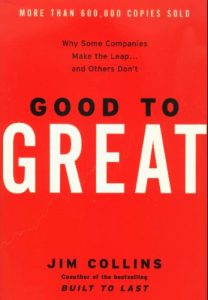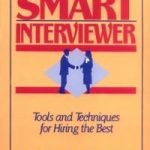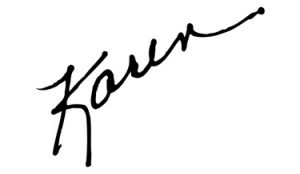We all know the sinking feeling: a deeply valued member of our staff has decided to move on.
And we all know its flip side:
A new hire – especially in times of tight staffing – also represents an exciting opportunity to improve and enrich the chemistry of a strong team.
For those reasons, hiring is one of the most important challenges we face as managers and leaders.
Making a truly excellent hire is the consummate investment in the future of your organization.
At the same time, a good parting is also important in its own way: It may relate to your team’s morale and can shape the way your operation is viewed by colleagues and competitors.
If you need numbers to persuade you, Michael Watkins estimates in his book,“The First 90 Days,” that the cost of a failed hire is 14 to 28 times base compensation. In addition to bottom-line costs, it takes a toll on individual lives and on an organization’s productivity.
So with this issue of our newsletter, we look at six best practices for hiring.
We include advice from Wunderlin Company team members Shelly Tomaszewski and Laura Butcher and from managers in a wide range of fields.
 1. Understand our changing times. The landscape has been shifting in dramatic ways when it comes to hiring and job transitions. Long-term loyalty to employers may seem a quaint notion to some people in tumultuous times that have included lay-offs, mergers, new technologies and disruptive changes in global markets. The Internet offers ever-increasing new resources – including online networks to research the people, the players and the process. You can find job postings around the world, interview questions-and-answers, even salaries on some fields.
1. Understand our changing times. The landscape has been shifting in dramatic ways when it comes to hiring and job transitions. Long-term loyalty to employers may seem a quaint notion to some people in tumultuous times that have included lay-offs, mergers, new technologies and disruptive changes in global markets. The Internet offers ever-increasing new resources – including online networks to research the people, the players and the process. You can find job postings around the world, interview questions-and-answers, even salaries on some fields.
Professionalism still rules, even in these days of rapid-fire information sharing. We’ve all seen the stumbles like news of resignations rippling through the Twitter-sphere before they make the office memo. It’s important for you and your staff to use restraint so that you go through the resignation-and-hiring process professionally and thoughtfully.
 2. Know what you want in a new hire. The first step is to create a current, specific, and accurate job description. Start with your current strategic plan. Where are you headed in the future? What knowledge, skills, and behaviors are most important in a new employee? If you are replacing a worker, ask yourself: “How has this job changed?” “What would I like to see approached differently?” “What attributes are critical?” “What would be the result of hiring the right person?”
2. Know what you want in a new hire. The first step is to create a current, specific, and accurate job description. Start with your current strategic plan. Where are you headed in the future? What knowledge, skills, and behaviors are most important in a new employee? If you are replacing a worker, ask yourself: “How has this job changed?” “What would I like to see approached differently?” “What attributes are critical?” “What would be the result of hiring the right person?”
In the Jim Collins book “Good to Great” he talks about “getting the right people on the bus.” That’s what a strong job description will help you do.
The best job descriptions start with the objective or purpose of the role, and then present job responsibilities in broad terms, not on a task level. For example, for a sales position, you might include “demonstrates optimism, persistence, and an ability to present ideas to customers,” rather than functional duties like “make 10 cold calls a week.”
The job description can also reflect your organization’s values. A recent client of Shelly’s determined compassion and humility to be two of their values, for example.
So as the process of hiring moved forward, leaders built in questions to address that. For example: “Can you give me an example of a time an employee came to you asking for help with a personal issue? What did you do?”
Or: “Tell me about a time when you had to work with someone you did not necessarily respect.”
“Give me an example of a time you had to deliver feedback, or criticism to an employee.” Listen to how they handled it. Did they deliver the feedback respectfully?
Which brings us to the question of the process….
 3. Explore experience and behavior: Don’t base your hiring decisions simply on your gut reaction. Once you have a current, specific, and accurate job description and a number of candidates, how do you make a good match?
3. Explore experience and behavior: Don’t base your hiring decisions simply on your gut reaction. Once you have a current, specific, and accurate job description and a number of candidates, how do you make a good match?
Past behavior is the best predictor of future performance. That is the theory behind behavioral interviewing and it’s a technique that most HR professionals recommend for evaluating job candidates. “Tell me about a time when you…(describe a situation here)” is typical of a behavioral interviewing question.
The secret is then to follow up that question with more specific questions, such as, “How did it go?” “What was the impact of your contribution?”
Many candidates are familiar with the behavioral interview technique – Shelly recently did a quick Internet search of “interview questions” and found 25 pages of resources of interview questions and answers to them. “This makes strong skills in behavioral based interviewing even more critical for hiring managers,” she said.
The Smart Interviewer, by Bradford D. Smart, is an excellent source for additional behavioral interview details.
Laura also endorses conducting multiple interviews with a candidate, each conducted by a different person, including someone who reports directly to the position. She says, “It just gives you different viewpoints – different lenses – from which to evaluate the candidate. Ultimately, it should be one person who makes the hiring decision.”
Talent and skills assessments can also help measure a candidate’s fit. Background and reference checks are critical – and should take place at the end of the interviewing process. They should be used to validate your decision or to learn something that would cause you to reconsider it.
When business leaders are interviewed in newspapers and magazines, a favorite question seems to be: How do you interview and hire?
Chief executive of Bloomingdale’s, Michael Gould, in recent NYT interview, said he looks for “intellectual curiosity.” Applicants will have walked through the store. He asks, “What didn’t you like?” “What do you do when you are not working?” “What should I know about you that I haven’t already asked?” “What’s the best business decision you’ve made in the last year? The worst?”
Karl Heiselman, the CEO of Wolff Olins, an international brand-consulting firm, likes to ask open- ended questions like “What’s your story?” He sometimes gives leading candidates an assignment and has them come back and present to the larger group. “You can see how they really think, as opposed to how they interview.”
4. Hire for smarts. At the highest levels of an organization, the most crucial predictor of executive success is not confidence, kindness, or charisma: it is sheer brainpower.
In a Harvard Business Review article entitled Hiring for Smarts, Justin Menkes argues that critical thinking and clarity of thought are key qualities.
He says executives need to be measured on three key scales: accomplishing tasks, working with and through others, and judging oneself and adapting one’s behavior accordingly.
Measuring a candidate’s brainpower is not easy, but it can be done.
Develop cases and scenarios that reflect the complexity of your organization’s environment. When candidates offer their approach to addressing that situation, you can gain insight into the quality of their thinking process. This technique works particularly well in comparing the quality of several candidates’ replies. Learning to interview and assess executive candidates for intelligence can deepen insight into a candidate’s potential to contribute to your team.
The CEO of the IT company Cognizant, Francisco D’Souza, told the New York Times recently, that in these changing times, it’s critical to find people with “an innate ability to learn.”
“Most everything we need to do our jobs becomes obsolete quickly. And the half-life of knowledge is becoming shorter and shorter. So do you have the personal agility to continually renew your skills and reinvent yourself?”
5: Don’t expect your new hires to sink or swim: Help them get oriented. When designing an on-boarding process you should consider what information an employee needs to do their job – and the relationships they need to build in order to feel part of the organization.
These relationships can be built in orientation classrooms, one-on-one meetings with coworkers and managers, and team meetings. Encourage a social network with each orientation “graduating” class so they can keep in touch as they go through a variety of experiences in their first 90 days.
Help team members learn upfront how a new manager likes to receive information and communicate with his or her employees. People don’t have to learn by trial-and-error – and it gets new hires off to a quick start.
6. Learn from those leaving. Your focus is sure to be on a new hire. But it is important to understand why employees leave – and whether you could have done anything to keep them.
It can be a powerful strategic management tool for reducing turnover’s sting. If done candidly and consistently, the information also can help inform future hiring decisions.
What you are looking for most: trends and patterns that may relate to current employees’ satisfaction.
If you hear time and time again that people are leaving because the company is not family-friendly, for example, that’s an issue to address.
As with all your recruiting, interviewing and hiring processes, make sure that your questions comply with legal regulations. Check your proposed interview questions with your human-resource manager or employment attorney to ensure that you avoid legal pitfalls.
And good luck!
No matter the circumstances, your skill at recruiting and hiring the right people is shaped by principle, practice and experience.
It’s worth the effort: We all know the transformative power of hiring people who shine at their work and grow in their skills and wisdom.



Leave a Reply